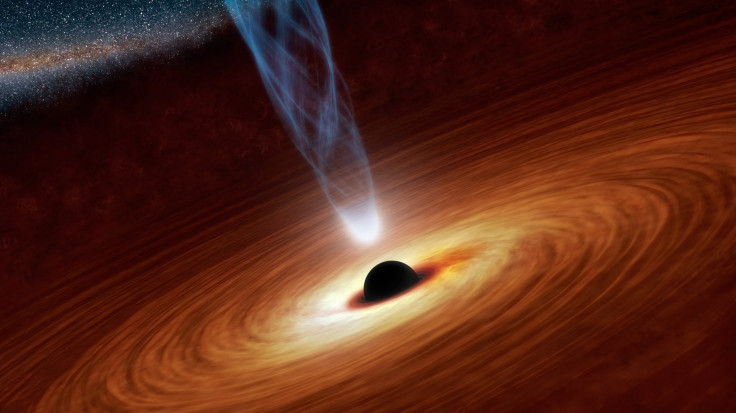Black Hole Jets Stifle Star Formation By Increasing Gas Turbulence In Galaxies, Study Reveals

Black holes — objects that are so dense that not even light can escape their gravitational pull — play a key role in suppressing star formation, according to a study published in the latest edition of the journal Astronomy & Astrophysics .
The study, based on observations of the galaxy IC5063 by the European Southern Observatory’s Atacama Large Millimeter/submillimeter Array (ALMA), revealed that jets of energetic plasma that emerge from a black hole’s accretion disk expel gas and dust from the galaxy and increase turbulence, thereby preventing the gravitational collapse that eventually leads to star formation. In addition, these plasma jet raise the temperature of the molecular and atomic gas even at distances of up to 3,000 light-years — another factor that impedes star formation.
“The molecular gas impacted by the black hole jet is heated, with temperatures often in the range 30K to 100K [-406 to -279 degrees Fahrenheit]. The importance of this result lies in the impediments it poses for star formation — the increased thermal and turbulent motions of the gas delay its gravitational collapse,” researchers from the National and Kapodistrian University of Athens, who were involved in the study, said in a statement. “The gravitational collapse is further delayed by the dispersion of the clouds as the impact of the jet removes gas from dense clouds and disperses it into tenuous winds. The mass of the molecular gas in the winds is at least 2 million solar masses.”
Stars are formed when clouds of gas and dust cool down enough to condense. Normally, this happens at a temperature of roughly 10 Kelvin (-442 degrees Fahrenheit).
Although it has previously been suggested that black hole-driven jets and winds can inhibit star formation in galaxies, this study provides a direct observational evidence for the phenomenon.
“This result is encouraging for future studies in the field, as it indicates that the detection of molecular winds will be easier than previously thought for distant galaxies," the researchers said. "Consequently, scientists can evaluate the role of the winds driven by black hole jets in the sizes of the observed galaxies over cosmological scales.”
© Copyright IBTimes 2024. All rights reserved.






















